The common name of Mammillaria microthele is owl eye cactus. It is mainly recognized for its dichotomous branching which is quite different to the rest of cacti in general.
Dichotomous branching means forking or dividing into two parts. it usually starts to grow as a single head and will end up dividing into twice and consequently there will be four separate branches.
These plants are native to Mexico and could usually be spotted in areas which are above 1000-2200 meters above sea level.
Their natural habitat would usually be limestone slopes, hills and even plains in xerophytic shrubland.
These are extra short globular shaped sets of plants. They would consist of spines as well. They will be hardy but they are user friendly too.
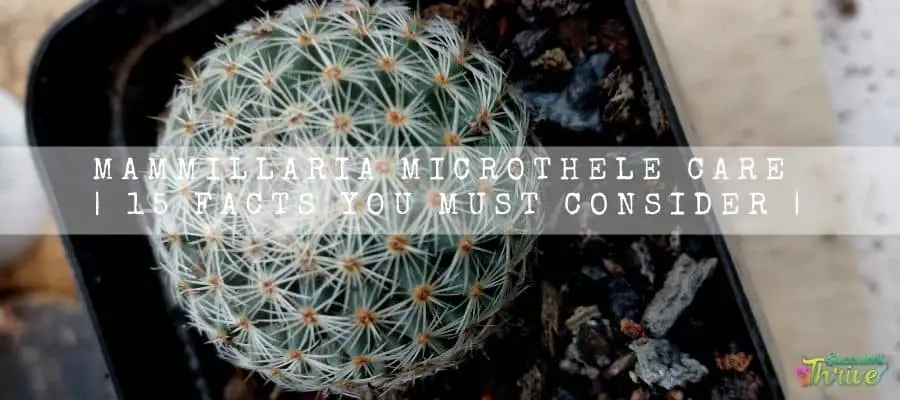
How do I identify a Mammillaria microthele?
Mammillaria microthele cactus are a low growing set of flattened plants. Further they would tend to grow tight in a compact manner.
They would further consist of short spines which you could spot in white. They would usually form low and mound in time as well.
Size
If we take the stem of these plants. they would tend to take a discoidal to globose shape. They would look apically depressed whilst segregating dichotomously.
Further those stems would be about 6 cm in diameter. Their tubercles would be about 6 mm in length. Further they would look woolly in their axills.
Apart from the above, Mammillaria microthele cactus would comprise 22-24 small spines which you could spot in white setiform.
Their length would be about 2-4mm. Not only that but also, they would comprise 2 central spines. They would look much stouter than the radial spines.
Growth
Mammillaria microthele are a slow growing set of cactus plants.
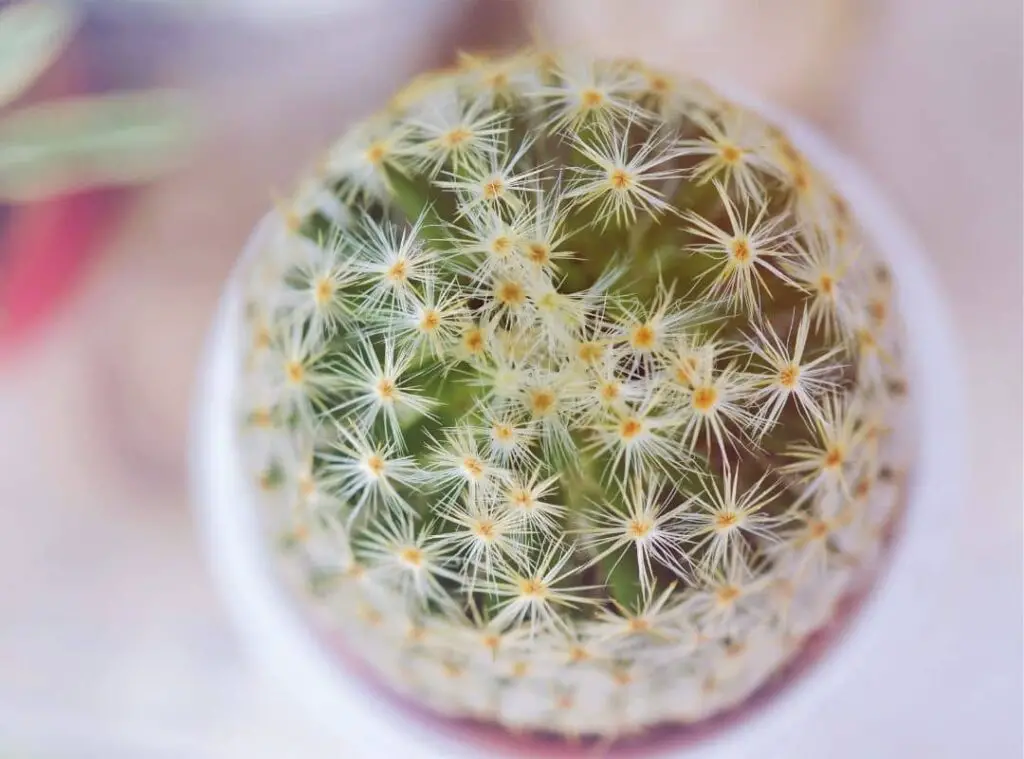
One look care guide
| Botanical Name | Mammillaria microthele |
| Common Name | Owl eye cactus |
| Plant Type | Cactus |
| Mature Size | 6 cm in size |
| Sun Exposure | Full sunlight to partial sunlight |
| Soil Type | Well draining |
| Soil pH | Around 6 |
| Bloom Time | Spring |
| Flower Color | pure white to fresh colored |
| Hardiness Zones | 9b to 11b |
| Native Area | Mexico |
| Toxicity | Nontoxic |
| Average price | 5 USD |
How do you take care of a Mammillaria microthele?
Light Requirement
Mammillaria microthele cactus would thrive well in full sunlight ideally in the morning hours. In the afternoon, they would prefer to grow under shade.
They would thrive well in those conditions when you grow them outdoors.
On the other hand, When you grow them indoors, best is to place them by a windowsill so that they can get adequate bright sunlight. They would survive in direct sunlight for some time when you grow them indoors too.
In other words, Mammillaria microthele cactus would perform well in full sunlight to partial sunlight.
Avoid exposing these plants for direct sunlight for prolonged periods.
Having said that, if you expose the Mammillaria microthele cactus to direct sunlight for sometime, that would be beneficial in encouraging the flowering of the plant.
Not only that but also, it would help to develop the spines as well. This literally means they would be great picks for outdoor gardening given that they will not expose for colder weather conditions.
Temperature and humidity
Mammillaria microthele cactus would prefer to grow in temperatures which are warm. Having said that they would be cold hardy upto -3.9 degrees Celsius temperatures.
Is it cold hardy?
Mammillaria microthele cactus are cold hardy to some extent only.
USDA Hardiness Zone
Mammillaria microthele cactus would love to grow in USDA hardiness zones such as 9b-11b.
Having said that, I would urge you to overwinter these Mammillaria microthele plants ideally in a bright and warm greenhouse. There the temperatures should be ideally 8 degrees – 10 degrees Celsius.
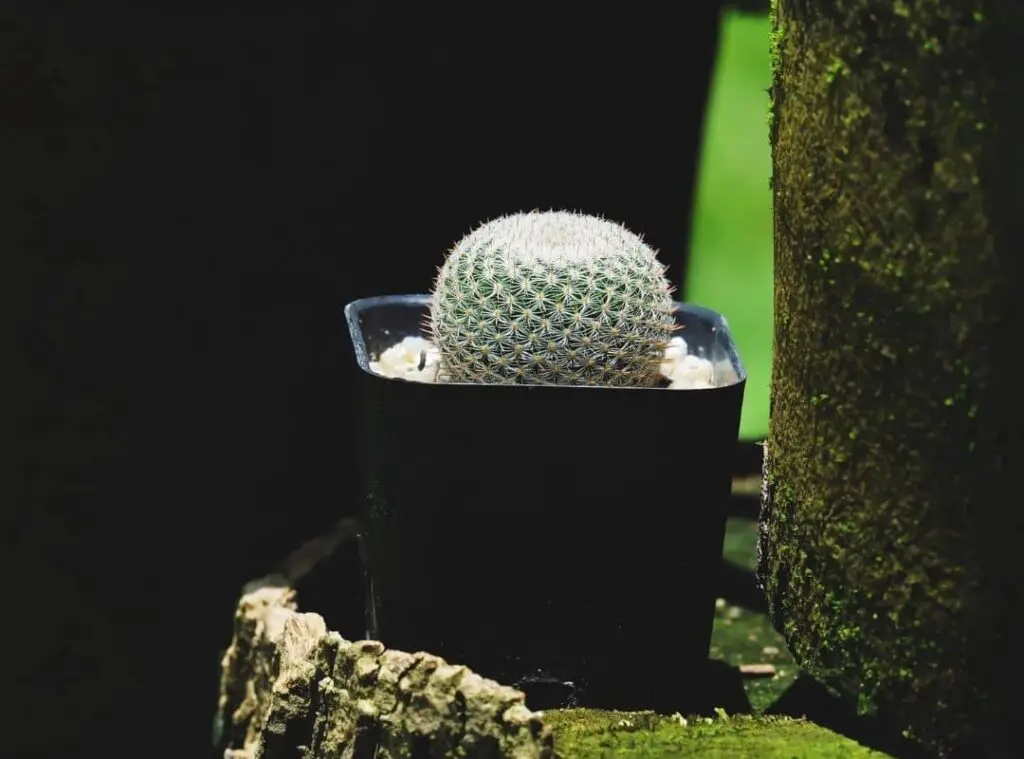
Watering Requirement
In terms of watering the Mammillaria microthele cactus, it could vary depending on the season.
For example, if you take the winter season, you need to ideally cut back on watering so that you could keep them dry.
These plants are quite sensitive towards the soggy and waterlogged conditions.
As such you need to be very vigilant when watering them. Unless chances are that the plants will end up having root rots which could be lethal on them.
When watering them during their actively growing season, you could consider watering them sparingly. Avoid over watering these plants especially during the winter season.
Soil Requirement Type / pH
Just like with the rest of other cactus and succulents you should always go ahead with a well-draining soil mix. Moreover, you should use a very porous mineral based potting mix too.
Flowering and Fragrance
In terms of blooming of the Mammillaria microthele cactus, they would produce small flowers. In fact, they would be 3-5 mm in length.
Further you could spot them forming around the sides of the stem as well. The colors of the flowers would be pure white to fresh colored.
Flowering season would fall in the spring season over several weeks’ time. in addition to that they would also produce fruits which could be about 10 mm in length.
They would further consist of large black colored seeds as well.
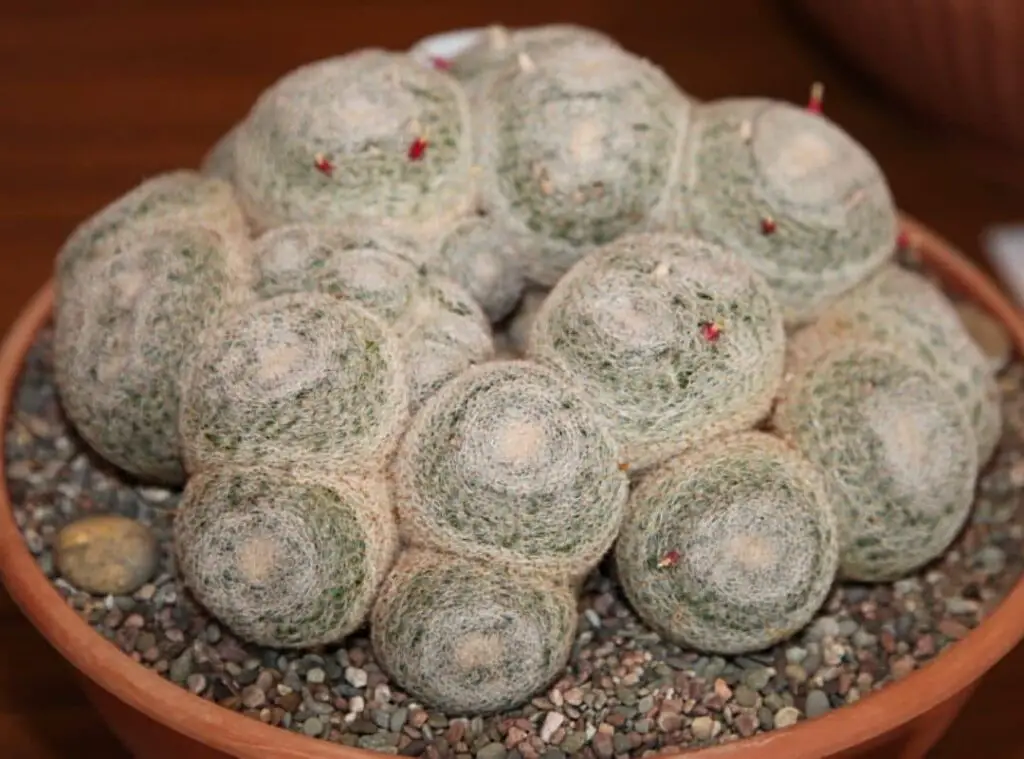
Pot size Potting and Repotting
Mammillaria microthele would love to grow in ideally a porous pot. The purpose of growing them in such material pots is that the plants would be able to have a good aeration.
In addition to that they will not retain excess moisture within the pot as well.
To repot, you should simply take the plant out of the pot without harming it. Next you should get rid of the old soil.
Observe whether there are any damaged or rotten root parts and if so, you may prune them as appropriate. After that you could place it in a new pot in which you add some fresh soil mix.
As mentioned, it has to be a well-draining one. Now you may place the plant in the pot whilst making sure that it is in the same depth as what it was before in the older pot.
Where to Plant?
You could consider growing these plants where they get full sunlight to partial sunlight. That is very crucial when considering a place to grow them.
In addition to that make sure that they are grown in a well-draining soil mix as well.
Fertilizer and time of year
In terms of fertilizing the Mammillaria microthele cactus, the best recommended fertilizer which you could use would be a feed which has a higher percentage of potassium.
You may feed them during summertime which is their actively growing season.
Dormancy
Mammillaria microthele cactus would go into dormancy during the winter season.
Can be toxic to pets
Mammillaria microthele are nontoxic plants. As such you do not need to have any second thoughts of growing one of these plants along with your domestic pets.
Handling the plant
As mentioned, these Mammillaria microthele cacti would come up with spines. However, you do not have to take any extra precautions since they will not harm you as they are user friendly.
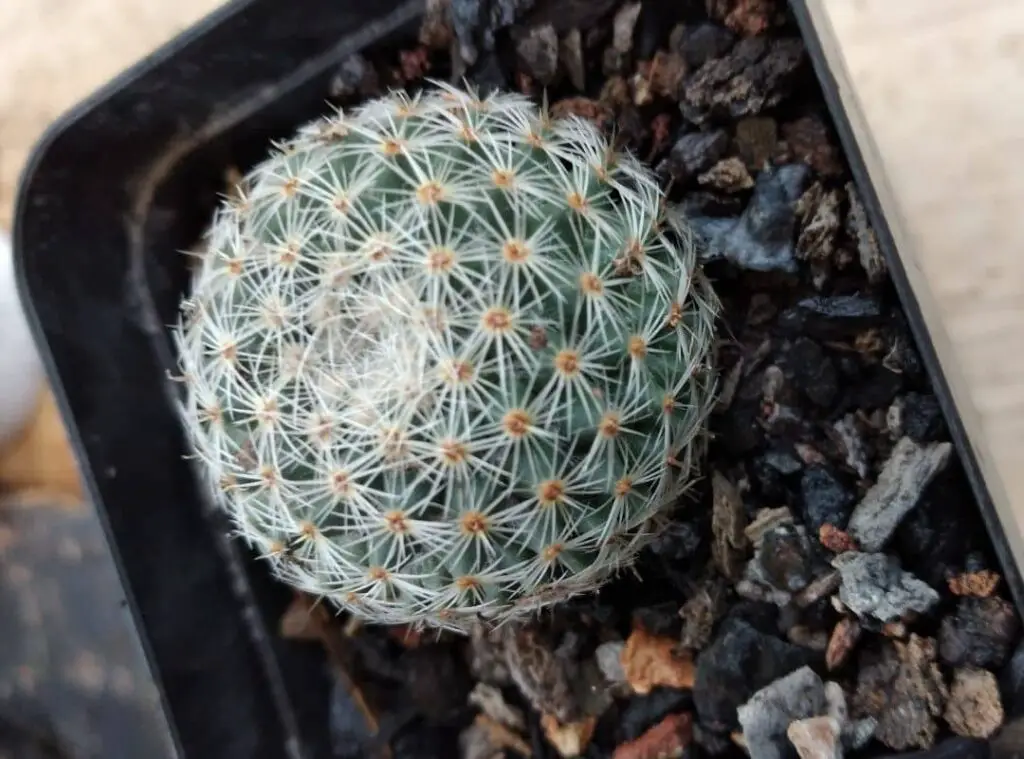
Common bugs and Illness issues
You will have to encounter issues related to fungal and bacterial attacks when growing them. The root cause for all these issues would be excess watering.
Hence why I keep reiterating that you need to be very vigilant when it comes to watering these plants. to overcome this best is to water these plants as per a watering schedule.
Furthermore, keep your plants under your observation so that you could identify if there are any early signs of these fungus and bacterial attacks.
Following are the annoying houseplant pests which you would come across when growing these beautiful Mammillaria microthele plants.
- Root Mealy Bugs
- Fungus Gnats (small black flies)
- Spider Mites
- Mealy Bugs
- Scale Insects
Overcoming these pests when they have spread on a greater level could be very challenging.
The reason for that is because they are tiny little creatures, and you cannot spot them to your naked eye at once.
In addition to that some of these pests would come with a coating which will safeguard them from the fungicides also. Not only that but also some of these pests are resistant to commercial pesticides as well.
To overcome these issues you could practice the following steps,
- Always keep your Mammillaria microthele cactus healthy. Literally you need to ensure that you are providing all its growing requirements and the right type of care treatments.
- When you have healthy plants, they would be more resistant towards the pests.
- Apply natural treatments at first. For example, if your beloved Mammillaria microthele cactus is under the attack of spider mites or mealybugs you could simply wash them away whilst using a water spray. When you are doing this avoid over watering your plant though.
- Keep the plants under your observation on a constant basis. When you repot, have a close look whether there are any root rots.
- If you spot any root rot, remedy them then and there. If you spot any scales or mealybugs, you could consider using a cotton swab dipped in rubber alcohol and clean them away.
- You may use a diluted rubbing alcohol solution and spray your cactus on and off. If your plant has any fungus gnats, you could use yellow sticky traps and get rid of them as well.
- If there are any pests which you cannot remove easily, I would recommend using a systemic insecticide.
Special Care tips
Mammillaria microthele are a slow growing set of plants. However, it is important that you use a very porous pot which has sufficient draining holes as well.
You could consider using a mineral based potting mix as the potting medium. Cut back in watering these plants during winter.
On the other hand, you could consider watering them moderately during their actively growing season.
Further you may feed them during the summer season as well. refrain in exposing them for direct sunlight for too long. Instead, you could provide them full sunlight in the morning and partial sunlight in the afternoon.
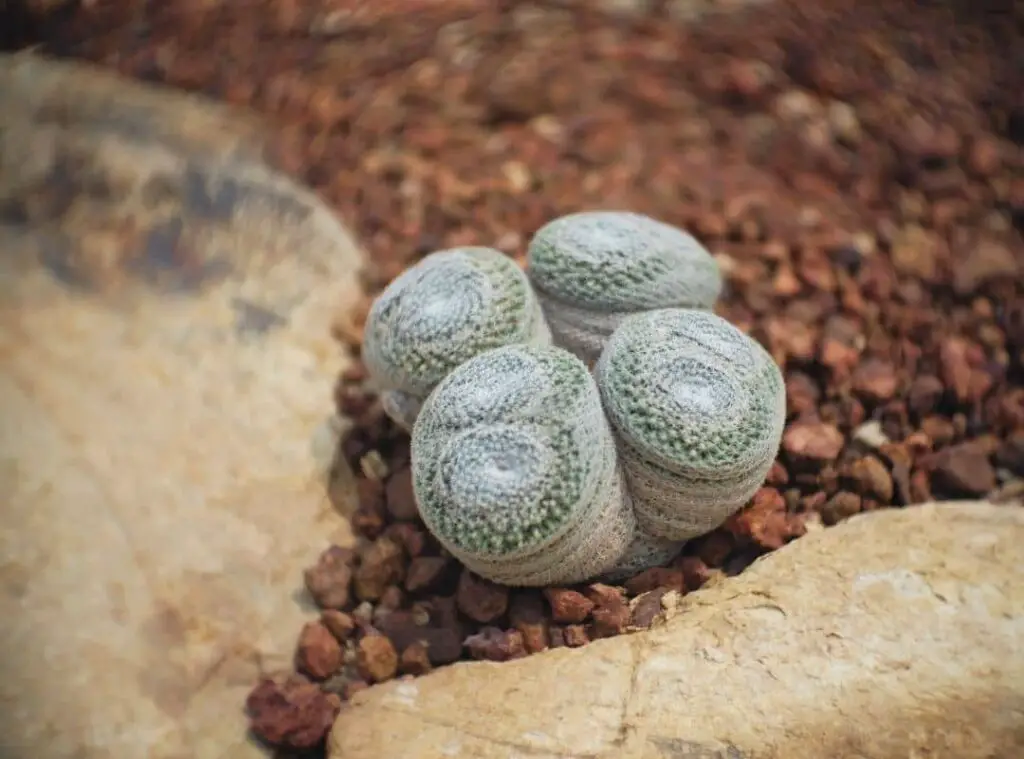
How do you propagate a Mammillaria microthele?
You could consider propagating them by their cuttings if they are available or direct sow right after their last frost.
Read more about Mammillaria propagation : Pincushion Cactus Propagation Guide | 10 Minutes Quick Read |
Mammillaria microthele plant benefits
They would perfectly fit in an indoor setting. They would look great in containers and even in cute looking pots as well. You may also consider adding them in cactus gardens as well.
Related questions
Is Mammillaria microthele an indoor plant?
You could grow Mammillaria microthele as indoor plants.
Do Mammillaria microtheles need direct sunlight?
They do not want direct sunlight, instead they would thrive under full sunlight in the morning and in the partial sunlight in the afternoon.
Having said that, they would thrive well in direct sunlight if you grew them indoors. However, that should also not be for a prolonged time.
Read More: Mammillaria luethyi | 15 Care Tips For A Healthy Plant |
